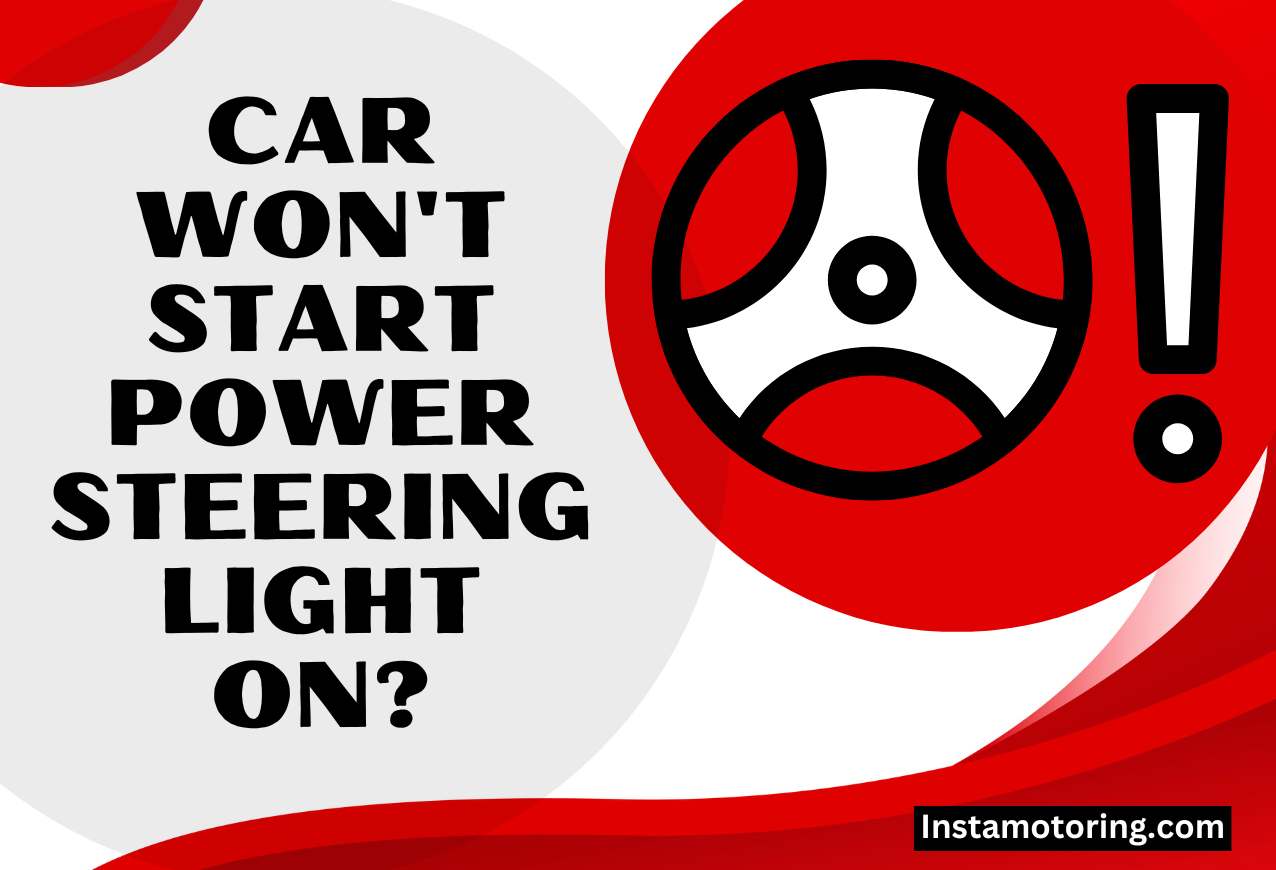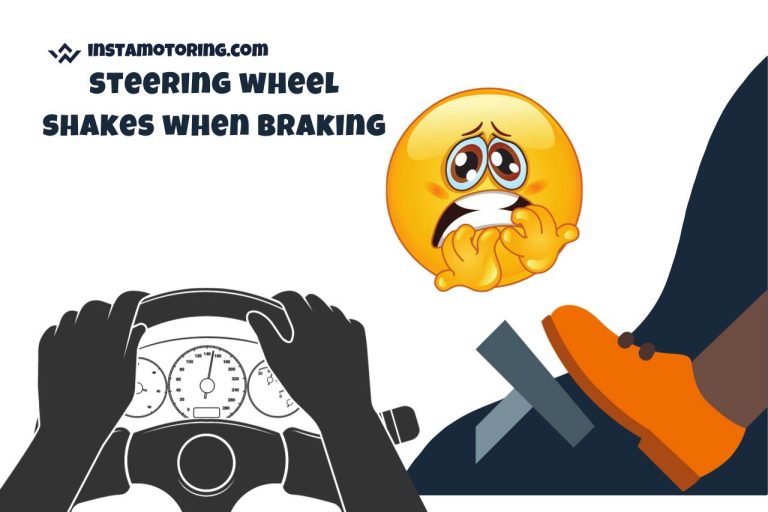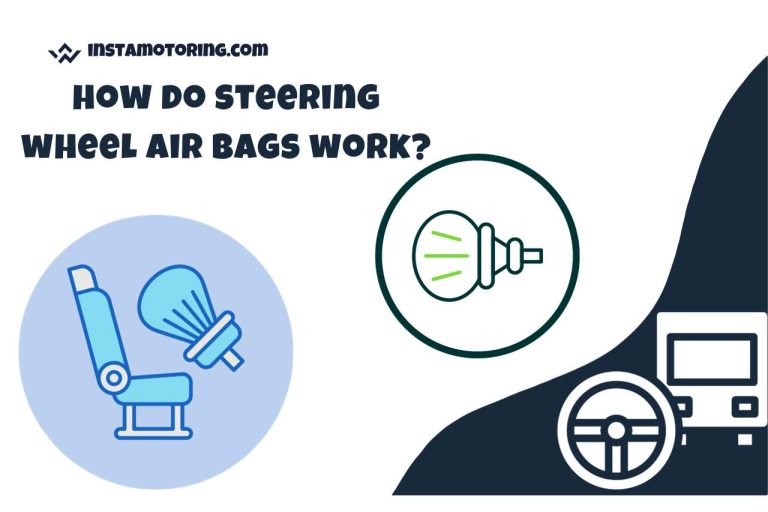Car Won’t Start Power Steering Light on [4 Reasons]
Few situations are more frustrating than turning the key in the ignition only to be met with silence and a glowing power steering light on your dashboard. Isn’t it? If your car won’t start power steering light on, it is possibly because of a malfunction in the electrical system of your vehicle. However, there can be more hidden culprits. Let us explain more about this today. Let’s start.
Car Won’t Start Power Steering Light on
When your car refuses to start, and the power steering light glows on the dashboard, several factors could contribute to this predicament, including a weak or dead battery, a faulty alternator, a faulty power steering pump, or even a steering fluid leak.
Below we have listed all of them and what you can do in order to fix the issue.
1. Weak or Dead Battery
When your car falters, refusing to start with an illuminated power steering light, a weak or dead battery is often the main problem. Let us explain this.
Impact on Power Steering and Engine Start
The power steering system relies on electrical power, and a weakened battery can trigger the power steering light as a warning of insufficient voltage. Concurrently, the engine’s starting capacity diminishes, resulting in turning the key yields no response.
Common Causes of Battery Weakness
- Batteries have a finite lifespan, and as they age, their capacity to hold a charge diminishes.
- Harsh weather conditions, be it extreme cold or heat, can accelerate the wear and tear on a battery.
- Components like lights or electronics left on when the engine is off can slowly drain the battery over time.
- A malfunctioning alternator or voltage regulator can compromise the battery’s ability to recharge.
How to Diagnose a Weak or Dead Battery
To diagnose a potential weak or dead battery issue, consider the following diagnostic measures:
- Measure the battery’s voltage using a multimeter to determine its charge level.
- Simulate the demands placed on the battery during engine start to assess its performance under load.
- Check for signs of corrosion or damage on the battery terminals.
We have a dedicated article on “Does Battery Affect Power Steering.” Read it for more info.
Solution
To address a weak or dead battery and restore your vehicle’s functionality, follow these comprehensive steps.
Jump-Start the Car
If the battery is weak but not completely dead, we recommend jump-starting the vehicle with jumper cables connected to a functional battery to provide a temporary solution.



Replace the Battery
If the battery is dead or unable to hold a charge, replacing it with a new, high-quality battery is the ultimate fix.
2. Faulty Alternator
When your car exhibits both a non-starting engine and an illuminated power steering light, another aspect that requires your attention is the alternator.
Impact on Power Supply
An alternator, a crucial component in your vehicle’s electrical system, is responsible for generating power and charging the battery while the engine is running.
When the alternator fails, it can lead to many issues, affecting not only the power steering system but also the car’s ability to start.
As the vehicle’s power steering system relies on a consistent power supply, any interruption can trigger the power steering warning light.
Simultaneously, the compromised power supply hampers the ignition process, resulting in a car that refuses to start.







Common Causes of Alternator Failure
- Over time, the bearings within the alternator may wear out, leading to friction and decreased performance.
- Diodes are crucial for converting AC power generated by the alternator into DC power for the battery. When diodes malfunction, it affects the entire charging process.
- A loose or damaged serpentine belt can impede the alternator’s ability to function, leading to power supply irregularities.
- Wiring within the alternator may fray or corrode, causing disruptions in power generation.
How to Diagnose a Faulty Alternator
When faced with a potential alternator issue, several diagnostic steps can be taken:
- Measure the voltage output of the alternator to ensure it is within the manufacturer’s specifications.
- Examine the serpentine belt for signs of wear, looseness, or damage.
- Strange noises from the alternator, such as grinding or whining, may indicate internal issues.
Solution
To remedy a faulty alternator and restore your car’s functionality, follow these steps:
Replace the Alternator
Install a new alternator to ensure a consistent and reliable power supply. We want you to opt for a high-quality replacement to enhance longevity. This will prevent the power steering light from appearing when starting the vehicle.
3. Power Steering Pump Issues
Another culprit may lie within the issues of the power steering pump. If it malfunctions, you may see the power steering light and the vehicle fails to start.
Impact on Power Steering and Engine Start
The power steering pump helps to steer effortlessly but can also impact the initiation of the engine. It is the hydraulic heart of your vehicle’s steering system. When compromised, it not only triggers the power steering warning light, signaling potential issues but can also disrupt the starting process of the engine.




Common Causes of Power Steering Pump Issues
- Leakage is a prevalent issue, diminishing fluid levels and affecting the pump’s hydraulic efficiency.
- Over time, wear and tear on bearings can lead to noise, decreased performance, and potential pump failure.
- Air entering the pump can cause cavitation, resulting in foaming of the fluid and hampering hydraulic function.
- A misaligned or damaged pulley can compromise the pump’s operation, leading to functional irregularities.
How to Diagnose Power Steering Pump Issues
Effective diagnosis of power steering pump issues involves the below-mentioned thorough examination:
- Regularly check power steering fluid levels and quality for signs of contamination or leakage.
- Inspect the power steering pump for visible leaks, stains, and examine the pulley for misalignment or damage.
- Unusual sounds like whining or squealing during steering may indicate bearing wear or cavitation.
Solution
In order to fix power steering pump issues and ensure optimal performance, consider the following comprehensive steps.
Fluid Maintenance
Regularly replace power steering fluid, ensuring it meets manufacturer specifications, to prevent contamination. Identify and promptly repair any leaks in the power steering system to maintain consistent fluid levels.
Pulley Realignment or Replacement
Ensure the pulley is correctly aligned and replace if damaged to safeguard proper pump function.
Bearing Replacement
If wear is detected, replace worn bearings promptly to eliminate noise and enhance pump efficiency.
Professional Inspection
In complex cases or when DIY solutions prove insufficient, seek professional assistance for a thorough inspection, repair, or replacement of the power steering pump.
4. Power Steering Fluid Problems
The power steering fluid serves as a vital lubricant and hydraulic medium, ensuring smooth and responsive steering. However, when faced with a car that hesitates to start with an illuminated power steering warning light, it is pivotal to look into potential power steering fluid problems.
Impact on Power Steering and Engine Start
We would say the power steering fluid is the lifeblood of the power steering system, helping seamless steering maneuvers. When your vehicle suffers low levels or contaminated fluid, it can hamper the start of the vehicle signaling the power steering warning light.



Common Causes of Power Steering Fluid Problems
- Gradual leakage or neglecting regular checks can lead to a decrease in power steering fluid levels.
- Accumulation of debris, moisture, or worn-out fluid over time can compromise the quality of the power steering fluid.
How to Diagnose Power Steering Fluid Problems
Here is how to find issues with power steering fluid problems.
- Routinely check power steering fluid levels using the dipstick to ensure they align with manufacturer specifications.
- Inspect the power steering fluid for clarity; cloudy or discolored fluid may indicate contamination.
- Examine the power steering system for signs of leakage, paying attention to hose connections, the pump, and the steering rack.
Solution
Let’s see how to fix power steering fluid problems to fix the issue you are facing.
Top-Up or Replace Fluid
If power steering fluid levels are low, top up with the manufacturer-recommended fluid. If contamination is suspected, consider a complete fluid replacement.
Leak Repairs
Promptly address any identified leaks, whether at hose connections, the pump, or the steering rack, to prevent fluid loss.
Regular Fluid Checks
Incorporate routine checks into your vehicle maintenance schedule, ensuring power steering fluid levels are consistently within the recommended range.
System Flush
Periodically flushing the power steering system removes old fluid and contaminants, promoting system longevity.
In addition, read our guide on”How to Reset Power Steering Warning Light” to reset the warning light.
Related Articles:
- Can you Rebuild a Power Steering Pump?
- Can You Drive Without Power Steering?
- Bubbles in Power Steering Fluid : [Symptoms, Causes and Fixes]



My name is James, I work as an Automotive Designer with 9 years of experience. I also work as a mechanic and vehicle inspector. I love deciphering complicated car exteriors and interiors and resolving fluid and oil troubles. InstaMotoring.com is here to help you troubleshoot your car with dependable and expert help.







